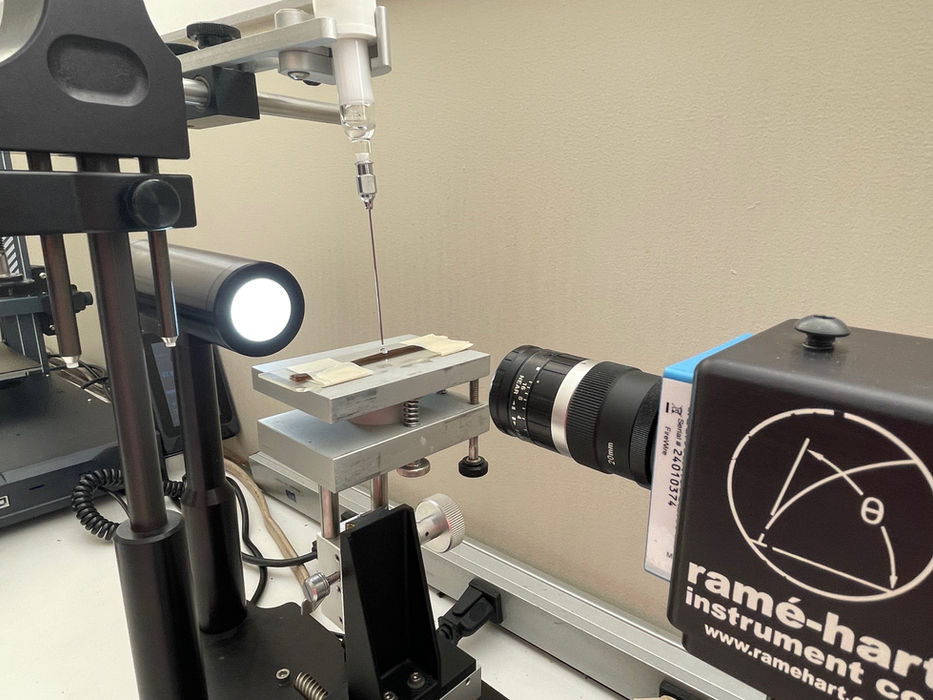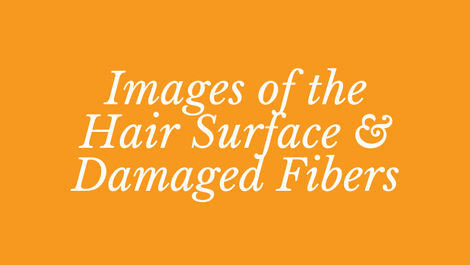Hair Cuticle Surface Damage and Repair
Contact Angle Measurements
Contact angle measurements are used to measure the degree of cuticle surface damage on the hair shaft. These measurements can be used to support hair cuticle protection and repair claims. Contact angle tests can also be used for more fundamental research.
Our hair has been designed, through evolution, to have a water-repellent surface. This helps drive-off rain droplets, making our hair more shower-proof. It also helps our hair, when it is wet, to detangle more easily. The water-repellent surface on hair is made from a combination of tightly bound surface lipids and a loose covering of sebum. An important tightly bound cuticle surface lipid is 18-MEA. 18-MEA is found nowhere-else in the human body and is perfectly designed for its role in the hair.
Many chemical treatments, for example hair bleaches and semi-permanent hair dyes, have been shown to remove tightly bound surface lipids, including 18-MEA, making hair less water-repellent, more tangly and harder to comb when wet. In recent years, treatments for the prevention and repair of this surface damage have become increasingly popular.
Contact angle measurements gauge how easily water spreads over the surface of the hair fiber, and can quantify cuticle surface damage. TRI Princeton offers an imaging method for measuring contact angle between hair and water droplets, using a Ramé-Hart Goniometer (Model 190 F2t). Measurement of the spreading of a water droplet on the hair shaft over time allows investigation of surface wetting behaviour immediately after the water is applied and at different subsequent time-points. Images of droplets spreading on the hair fiber over time can also be used to bring your claims stories to life.









.png)